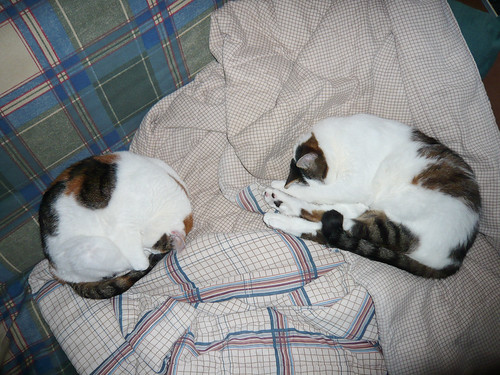Boing Boing pointed to a collection of links to author’s web pages a while back which led me to John Barnes’s blog which is primarily concerned with his efforts to sell the research materials and drafts of his past works to people who will keep them together and make them available for future research. In amongst the posts on this odd activity I discovered that he had self-published an unsellable novel as an e-book.
Barnes is on my buy-on-sight list, so no sooner had I seen that a book existed than I paid the four bucks to download a PDF (ack!) of this novel. (We’ll leave out the bit about the too much time I spent converting the PDF into something I could reasonably read on my Palm.)
Barnes includes front matter exploring how the book aged and why it was unpublishable. The short version of that tale is that it was written about a terrorist attack on an American city carried out by Muslims. And it was written in 1997. For various typical publishing reasons it didn’t get printed before Fall of 2001, and after that it was decidedly out of date.
The book is set in Detroit, Michigan. It follows three characters. First is Kit Miles, an arson investigator attempting to track down a new incendiary device used to set several especially nasty fires. Second is Adhem, one of the terrorists who is trying to find the same devices, only he knows just what they are because they were stolen from him. Finally, there’s Kit’s sister LaTonya who’s an FBI agent working undercover for a possibly corrupt congressman.
The characters are well drawn and the prose is largely up to Barnes’s usual page-turner quality. That said, you probably shouldn’t bother reading this unless you’re a die-hard Barnes fan.
The book clearly needed another rewrite even before true events made its fiction seem less strange. It’s heavily front-loaded with exposition and what turns out to be a subplot with many characters and events that don’t end up having more than a passing relevance to the main thrust of the book which plays out largely in the last few chapters.
Still, I read the whole thing. It was an interesting peek into how even a fairly experienced and talented writer like Barnes benefits from the editorial process.

 Should read “by Spider Robinson from an outline (or most of one) by Robert A Heinlein.” Yes, Heinlein has been dead for a while. What happened was that his literary executor found an outline and some notes for a novel he never got around to writing. Spider was a pretty logical choice to write it, being one of the biggest Heinlein fanboys around and having been frequently compared to the master.
Should read “by Spider Robinson from an outline (or most of one) by Robert A Heinlein.” Yes, Heinlein has been dead for a while. What happened was that his literary executor found an outline and some notes for a novel he never got around to writing. Spider was a pretty logical choice to write it, being one of the biggest Heinlein fanboys around and having been frequently compared to the master. Subtitled “or, A Young Lady’s Illustrated Primer”. The “Diamond Age” part of the title refers to an era ushered in by the perfection of nanotechnology and the ability to build diamonds (or nearly anything else) from raw elements and the parallel ability to use that tech to make stuff (like windows) out of diamond. The book has two primary narrative tracks. The first centers on John Percival Hackworth, a master programmer of nano computers. He is commissioned to build a computer in the form of a book which is optimized to interact with young girls and give them the kinds of experiences that will make them independent and capable women. The commissioned object is for the granddaughter of his wealthy patron, but another copy finds its way into the hands of Nell, a little girl with a drug addicted mother, an absent father, and a seemingly less-than-bright future. And Nell is, of course, the other primary character.
Subtitled “or, A Young Lady’s Illustrated Primer”. The “Diamond Age” part of the title refers to an era ushered in by the perfection of nanotechnology and the ability to build diamonds (or nearly anything else) from raw elements and the parallel ability to use that tech to make stuff (like windows) out of diamond. The book has two primary narrative tracks. The first centers on John Percival Hackworth, a master programmer of nano computers. He is commissioned to build a computer in the form of a book which is optimized to interact with young girls and give them the kinds of experiences that will make them independent and capable women. The commissioned object is for the granddaughter of his wealthy patron, but another copy finds its way into the hands of Nell, a little girl with a drug addicted mother, an absent father, and a seemingly less-than-bright future. And Nell is, of course, the other primary character.
 Sequel of sorts to Kushner’s Swordspoint, though Becky read this without having read that and managed just fine. As the book opens, our heroine Katherine is learning that in order to settle a lawsuit that is crippling her family she must go to the city (unnamed as in the other books set there, but fans (and the author) have taken to calling it Riverside) and, train as a sword fighter in the house of her uncle, the Mad Duke Tremontaine. Got that?
Sequel of sorts to Kushner’s Swordspoint, though Becky read this without having read that and managed just fine. As the book opens, our heroine Katherine is learning that in order to settle a lawsuit that is crippling her family she must go to the city (unnamed as in the other books set there, but fans (and the author) have taken to calling it Riverside) and, train as a sword fighter in the house of her uncle, the Mad Duke Tremontaine. Got that?